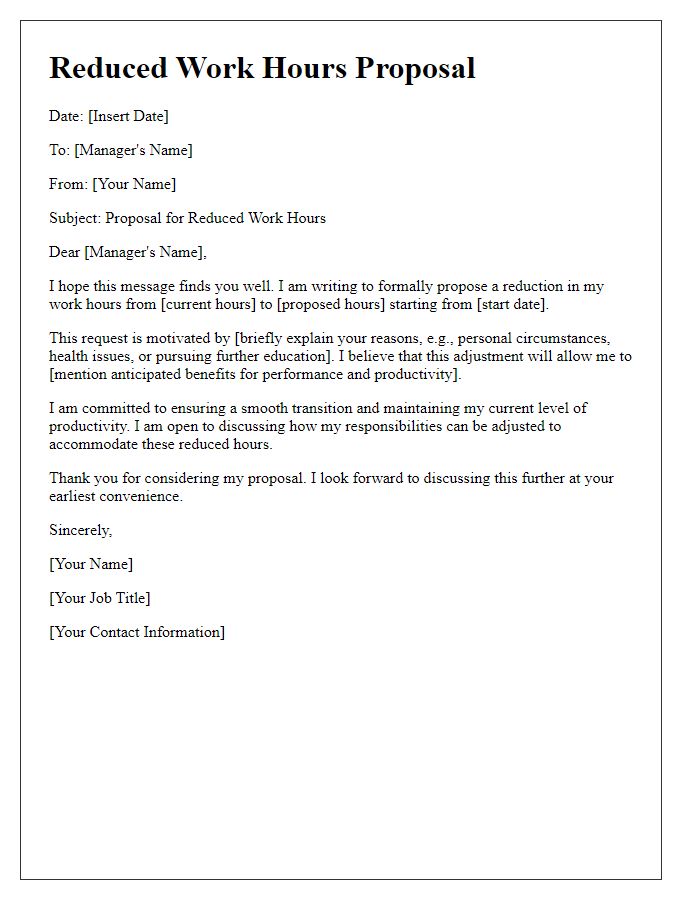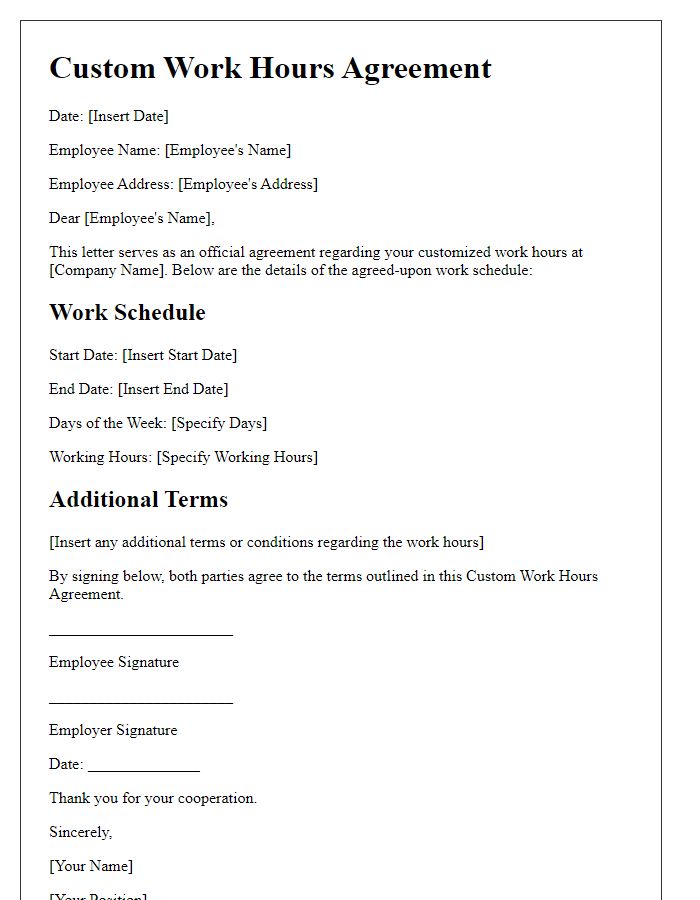Are you considering a reduced work hours agreement? Crafting the right letter can make all the difference in smoothly negotiating your new schedule. Whether you're seeking more time for personal commitments or simply aiming for a better work-life balance, having a clear and professional letter template can guide you through the process. Dive in to read more about how to effectively communicate your request and make the transition seamless!

Employee Information and Identification.
Employee information is critical to establish an understanding of reduced work hours agreements. Employee identification includes a unique employee ID number, typically assigned by the employer for tracking purposes. This number allows for efficient management of records and payroll, ensuring accurate documentation related to the employee's employment status. Additional details such as the employee's full name, department name, and job title provide clarity on the individual's role within the organization. Contact information, such as work phone number and email address, is essential for communication regarding any changes to working hours. Effective documentation also requires date of hire and current employment status, indicating eligibility for reduced work hours.
Proposed Reduced Work Schedule Details.
Proposed Reduced Work Schedule Details outline the specific adjustments to an employee's work hours. The new schedule may involve a decrease in total weekly hours, such as transitioning from a standard 40-hour work week to a 30-hour work week, effective from a designated start date. This adjustment aims to accommodate personal circumstances, such as childcare needs or health-related issues. The employee's responsibilities may remain unchanged, ensuring continuity of workflow, but with a modified timetable. Communication with the supervisor in the designated department, like Human Resources, is essential for establishing clear expectations and obligations regarding performance and availability. Additionally, any implications for benefits or compensation due to the reduced hours should be clearly outlined to prevent misunderstandings. Regular reviews, possibly on a monthly basis, can assess the effectiveness of the reduced schedule and make necessary adjustments.
Effective Date and Duration of Change.
A reduced work hours agreement outlines alterations in employment conditions, typically initiated to accommodate personal circumstances or organizational needs. The effective date, marked prominently, signifies the commencement of this modified schedule, while the duration specifies how long this arrangement will be in place, often expressed in weeks or months. This agreement may include specific start and end dates, ensuring clarity for both employee and employer. It's crucial to document any changes to pay or benefits associated with adjusted work hours, providing a clear understanding of expectations and obligations during this period. This document serves as a formal record that protects the interests of all parties involved, fostering better communication and stability in the workplace.
Impact on Salary and Benefits.
A reduced work hours agreement can significantly impact salary and benefits for employees. For instance, an employee transitioning from a full-time schedule of 40 hours per week to a part-time schedule of 20 hours per week may experience a proportional decrease in salary, amounting to a 50% reduction based on hourly wage rates. This reduction could also affect benefits such as health insurance coverage, retirement contributions, and paid time off, often tied to full-time employment status. Employers may adjust health insurance premiums, potentially requiring employees to bear a larger financial burden for coverage. In such agreements, it's imperative to detail the exact hours, new salary figures, and potential changes to benefit entitlements to ensure clarity and compliance with company policies and labor laws.
Terms of Agreement and Signature.
Reduced work hours agreement defines the parameters for employees transitioning to fewer hours within a workweek. Employees may negotiate a shift from standard full-time hours (usually 40 hours per week) to a part-time schedule (ranging from 20 to 30 hours per week), often due to personal circumstances or organizational changes. This agreement should specify the new working hours, including start and end times for each workday. Clarity on compensation, typically calculated on an hourly basis while adhering to minimum wage laws, is essential. Additionally, it should address employee benefits, such as health insurance and paid time off, which may be affected by reduced hours. A signature section at the end of the agreement indicates mutual consent between the employer and employee, often accompanied by the date of agreement to validate the terms.













Comments